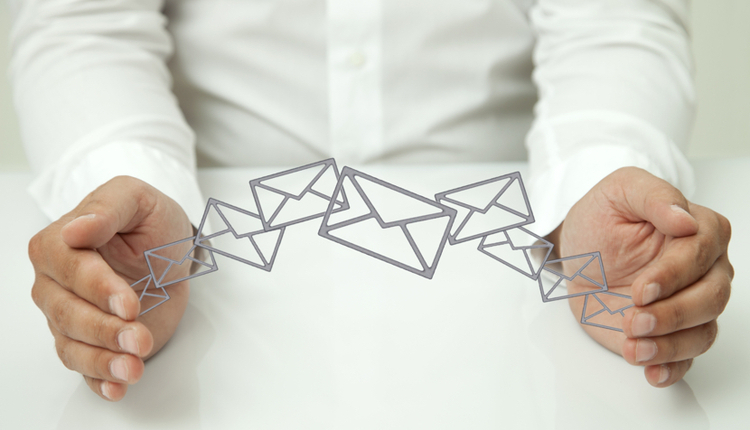
Rightsizing your printer fleet is a critical and a fundamental part of your outsourced managed print engagement. Ensuring that a company’s professionals have access to the devices they need to support their job functions while limiting waste is a difficult challenge for organizations implementing a managed print program. However, rightsizing is a critical component to securing potential revenue-boosting cost savings and increased work efficiency.
Is rightsizing a fancy word for downsizing?
No. While rightsizing often means reducing device count, people often interchange rightsizing and downsizing. It is true that many organizations need to reduce device count, but this is not the main objective of rightsizing and, sometimes, not the solution. Printer fleet rightsizing is the process of ensuring that everyone in your organization has access to the devices they need—in the most efficient landscape possible. It is creating an environment that promotes increased workflow efficiency, matching end user needs to product capabilities, balanced with cost-cutting initiatives.
When should I consider rightsizing?
Rightsizing should go hand-in-hand with your initial print environment assessment, as it gives you and your vendor full understanding of the current landscape of your print operations, providing insight into where there are bottlenecks from overused devices, waste in underused devices or even waste in improperly utilized devices. Upon gaining a full understanding of your printer environment, your vendor can make recommendations as to how your printer fleet should be organized to maximize efficiency, minimize waste and optimize cost savings. Most importantly, the assessment should address end user needs, not just the number of devices currently deployed or which devices are deployed. The initial assessment should have several key outcomes including:
1. Defining the current environment: How many and what type of devices are deployed?
Is rightsizing a fancy word for downsizing?
No. While rightsizing often means reducing device count, people often interchange rightsizing and downsizing. It is true that many organizations need to reduce device count, but this is not the main objective of rightsizing and, sometimes, not the solution. Printer fleet rightsizing is the process of ensuring that everyone in your organization has access to the devices they need—in the most efficient landscape possible. It is creating an environment that promotes increased workflow efficiency, matching end user needs to product capabilities, balanced with cost-cutting initiatives.
When should I consider rightsizing?
Rightsizing should go hand-in-hand with your initial print environment assessment, as it gives you and your vendor full understanding of the current landscape of your print operations, providing insight into where there are bottlenecks from overused devices, waste in underused devices or even waste in improperly utilized devices. Upon gaining a full understanding of your printer environment, your vendor can make recommendations as to how your printer fleet should be organized to maximize efficiency, minimize waste and optimize cost savings. Most importantly, the assessment should address end user needs, not just the number of devices currently deployed or which devices are deployed. The initial assessment should have several key outcomes including:
1. Defining the current environment: How many and what type of devices are deployed?
2. Understanding user needs and developing profiles around types of users and user requirement parameters.
3. Creating a comprehensive assessment of your current cost structuring, including operating costs and infrastructure costs
What should I avoid?
It is important to evaluate your options when outsourcing print management. Often times, a vendor will recommend a complete printer fleet overhaul, replacing all of your current devices with their preferred brand. This can become costly. First, if the devices are older, supplies and maintenance costs will be inflated, eating into your total program cost savings. In fact, separating managed print vendor services from hardware is one of the seven best practices for starting an outsourced managed print program.
It is also important to know that while your vendor may be acting in your best interest, they ultimately benefit from providing you with products and supplies and the associated services. Therefore, it is in their best interest to push as much hardware as possible into your environment. While this new equipment is probably an improvement of your current printer fleet, it may not be the absolute best option for your outsourced managed print engagement. In altering business process infrastructure, it is critical to ensure that you implement the best solution for your organization, as infrastructure is foundational to your workflows and, in turn, profitability.
Understand you are in control!
One of the mistakes we often see is that a customer will be guided into a set of very narrow choices, which favor that particular vendor. In reality, almost everything is open to negotiation. The vendor may say, “It isn’t possible to do that.” Don’t accept that answer, and always ask for a second opinion. We often see this with utility models (you only pay for what you print—no minimums or overage charges and no surcharges—it’s like electricity; you only pay for what you use). Vendors don’t like these models, because it shifts the risk to the vendor to make sure they do a good job of managing the environment. The reality is any vendor can provide (and almost all have at one point provided) a utility model-style agreement.
Also, vendors will sometimes say, "We have to have 100% control. We get to move devices and deploy the fleet as we see fit." The reality is any contract, even a 100% outsourced model, can, and should, have flexibility built into it.
How can I ensure my organization sees results?
Work with your vendor to identify a plan for printer fleet rightsizing in your initial assessment. Understand the real drivers of your costs and build levers into your contract with the vendor that provide incentives for meeting targets and penalties for missing targets. Ultimately, when it comes to altering your infrastructure, evaluate your options and ensure that you are creating the best print landscape for your organization’s unique needs. Only then can you rest assured that the promised cost savings will be realized in your business.
Edward Crowley has more than 30 years of experience in the high-tech industry and is the president and CEO of Photizo Group, a global consulting and market intelligence firm. Learn more about managed print outsourcing or follow Mr. Crowley on Twitter @PhotizoGroup.




















